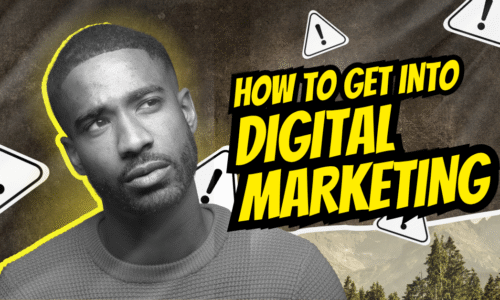Lead Generation in Digital Marketing (2025 Guide)

In the digital world, attracting the right people to your business isn’t just about flashy ads—it’s about strategy. That’s where lead generation in digital marketing comes in. This guide breaks down everything you need to know: what it is, how it works, proven strategies, and best practices to start generating leads online—even if you’re just getting started.
What Is Lead Generation in Digital Marketing?
Lead generation in digital marketing is the process of attracting potential customers and getting their information (like name, email, or phone number) so you can market to them later. This helps businesses grow by building a list of people already interested in what they offer.
Citation: HubSpot (2024) defines lead generation as “the process of attracting and converting strangers and prospects into someone who has indicated interest in your company’s product or service.”
Why Lead Generation Matters More Than Ever
This section emphasizes the importance and value of generating leads in 2025 and beyond.
- Paid ads are getting expensive
- Consumers expect value before buying
- Personalized email and remarketing are based on collected leads
- It creates long-term, owned audiences (not rented from social platforms)
Fact: According to Demand Metric, content marketing generates 3x more leads than outbound marketing and costs 62% less.
Types of Lead Generation in Digital Marketing
Different strategies attract different kinds of leads. Here are the main types:
| Lead Gen Type | Description | Example |
| Inbound | Content that pulls users in | Blogs, videos, eBooks |
| Outbound | Direct outreach | Cold emails, paid ads |
| Paid | Uses advertising budgets | Google Ads, Facebook Ads |
| Organic | No paid traffic | SEO, social media |
| Referral | Leads from other users | Affiliates, referrals |
Proven Strategies to Generate Leads Online
This section introduces practical ways to attract and convert leads. Ideal for both beginners and intermediate marketers.
1. Create Helpful Content
Educational content helps people solve problems—and that builds trust.
- Blog posts (e.g., “Top 5 Tips for Email Marketing”)
- Videos or how-to guides
- Infographics or downloadable checklists
- Case studies and success stories
2. Use Lead Magnets
These are freebies offered in exchange for contact info.
Examples:
- PDF checklists
- Free tools or templates
- Webinar sign-ups
- Email course access
3. Landing Pages + Clear Forms
Create focused landing pages with:
- One headline
- One form
- One clear action
Tools: Leadpages, Unbounce, Elementor
4. Run Paid Campaigns (PPC + Social)
Use platforms like Google Ads, Facebook Ads, or LinkedIn Ads to drive targeted traffic.
- Use conversion tracking
- Target specific demographics
- Run A/B tests on creatives
5. Optimise for SEO
High-ranking content brings organic leads consistently.
- Use long-tail keywords
- Include internal links
- Add schema markup
- Optimise for mobile and speed
Best Practices for Lead Generation Campaigns
To make your strategy work long-term, follow these best practices:
- Know your audience: Don’t market to everyone
- Segment your leads: Separate based on interest or stage
- Automate follow-ups: Use tools like Mailchimp, ActiveCampaign
- Track metrics: Monitor CTRs, CPL (cost per lead), and conversion rate
- Refine constantly: What worked last month may not work today
How to Get Started with Lead Generation
New to all of this? Here’s a beginner-friendly approach:
Step 1: Choose a Goal
Do you want emails? Demo bookings? Event sign-ups?
Step 2: Pick One Channel to Start
Blog + email? Ads + landing page? Social media lead form?
Step 3: Offer Value First
Give before asking—whether that’s content or a free resource.
Step 4: Use a CRM or Spreadsheet to Track Leads
Even simple tools like Google Sheets work if you’re starting out.
Common Mistakes to Avoid in Digital Lead Generation
Avoid these to save money and time:
- No clear CTA
- Asking for too much info too soon
- Not testing different formats
- Sending spammy or irrelevant emails
- Ignoring mobile optimization
Tools to Help You Generate More Leads
These tools make lead generation easier and more effective:
- HubSpot CRM – for lead tracking
- Canva – to design visuals
- Google Ads – for paid traffic
- Mailchimp – for email campaigns
- OptinMonster – for lead capture forms
- SEMrush – for keyword and competitor research
Final Thoughts on Lead Generation in Digital Marketing
Lead generation in digital marketing is not just a trend—it’s a necessity. Whether you run a small business, agency, or personal brand, having a steady stream of leads is how you stay competitive in 2025 and beyond.
Start small. Be consistent. Focus on providing value. And with time, your lead list—and business—will grow.


![Top 10 Digital Marketing Case Studies [2025 Edition]](https://skyhighreach.com/wp-content/uploads/2025/08/9-500x300.png)

